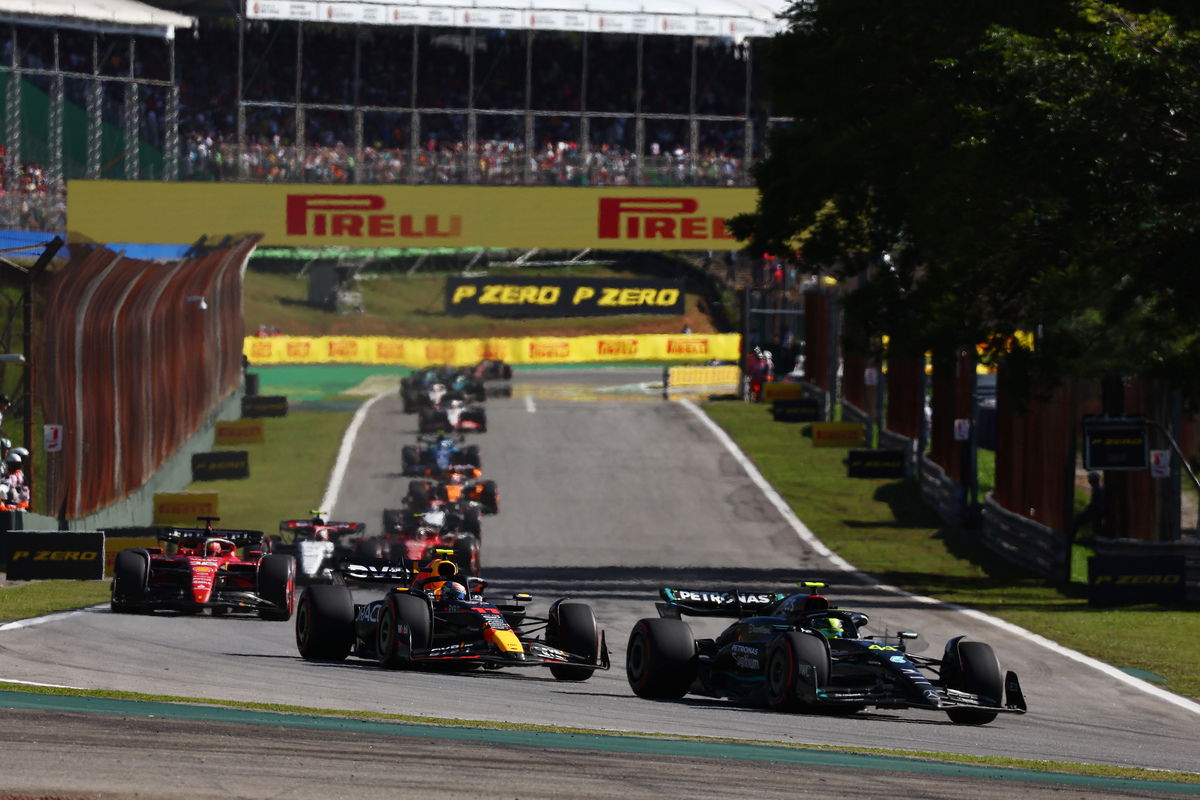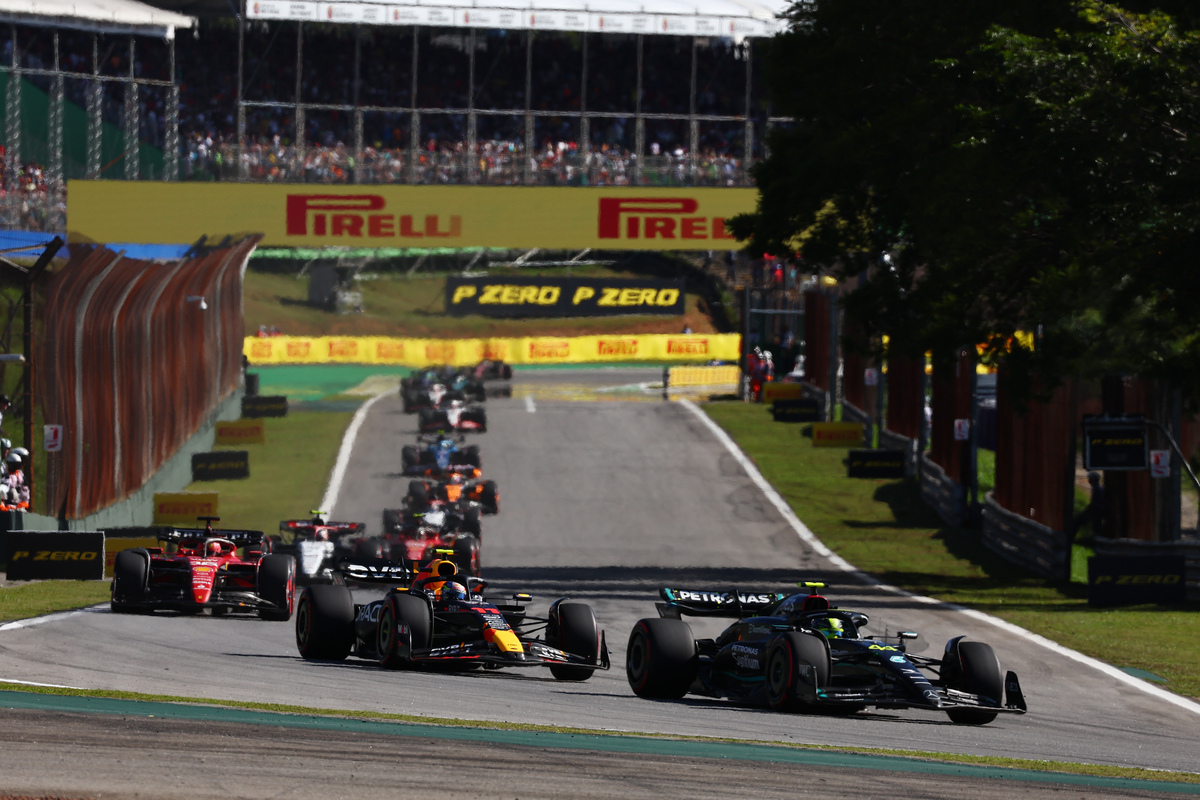

Sergio Perez has suggested F1 introduce reverse grids for Sprint encounters for next season as a way to spice up the show.
Changes are currently being discussed ahead of refinements for 2024 following criticisms about the format as it stands.
Currently, the Saturday of a race weekend is devoted entirely to the Sprint, with Shootout qualifying leading into the 100km race later in the day.
That pushes qualifying for Sunday’s grand prix back to Friday, and with it parc ferme, a point that became a consideration at the United States Grand Prix.
While the Sao Paulo Sprint proved an entertaining encounter with plenty of action, it came in stark contrast to a processional affair in the US.
Max Verstappen made the argument that the Sprint robs fans of the unknown heading into the race, given it effectively reveals each teams’ race pace.
“If they want to keep this format of the sprint races, we’ve got to change it,” Perez said after finishing third in the Sainz Paulo Sprint.
“I would propose a reverse grid, something like that, to make it more interesting for fans because I don’t think it’s working, what we want to achieve and nothing really happens in this sort of races.”
Sprint weekends are designed to spice up the action for fans, adding interest on a Saturday and dragging the competitive element earlier in the weekend.
According to F1, television audiences have increased over the events that have held Sprints, as have most other metrics too including social media engagement.
One of the problems teams face is the limited practice prior to qualifying, from which point set-up is locked away.
That’s one issue up for discussion, as is the timing of the Sprint and qualifying for the grand prix.
The F1 Commission will make the final decision, but it’s expected that will see qualifying revert to Saturday afternoon next season, with the Sprint preceding it and the Shootout being pushed to Friday.
Perez, however, proposed more than just a refinement of session timings.
Acknowledging the sprints are more about spectacle than sport in its purest sense, he’s suggested reverse grids are the way forward, despite the concept having been rejected previously.
“I think it will mix up things and create more opportunities, a lot more overtaking,” he argued.
“If we want to keep this format, give it a go on something quite different because I think for the last two years this sort of event hasn’t brought a lot of good racing.”
Changes for last year saw points awarded down to eighth, with the winner receiving eight versus three in the first year of the concept.
It was hoped that would give drivers more to race for without being overly artificial or unduly impacting the world championship itself, where the winner receives 25 points.
The concept of a Sprint Championship has also been floated, disconnected from the world championship proper.
Perez’s comments follow those of his team boss, Christian Horner, who suggested to concept of a reverse top 10 to introduce “a bit more jeopardy.”
“Whether you reverse the top 10 or something with it – but then you’ve got to add enough points to it to make it worth it for the drivers’ while to really go for it,” Horner said following the US Grand Prix Sprint.
“We’re in a process where we need to be open to change and evolution.
“I think the execution, we can do a better job in it, making it more exciting for the viewer.”
Ironically, the Sao Paulo Sprint proved to be one of the most entertaining encounters this season.




















